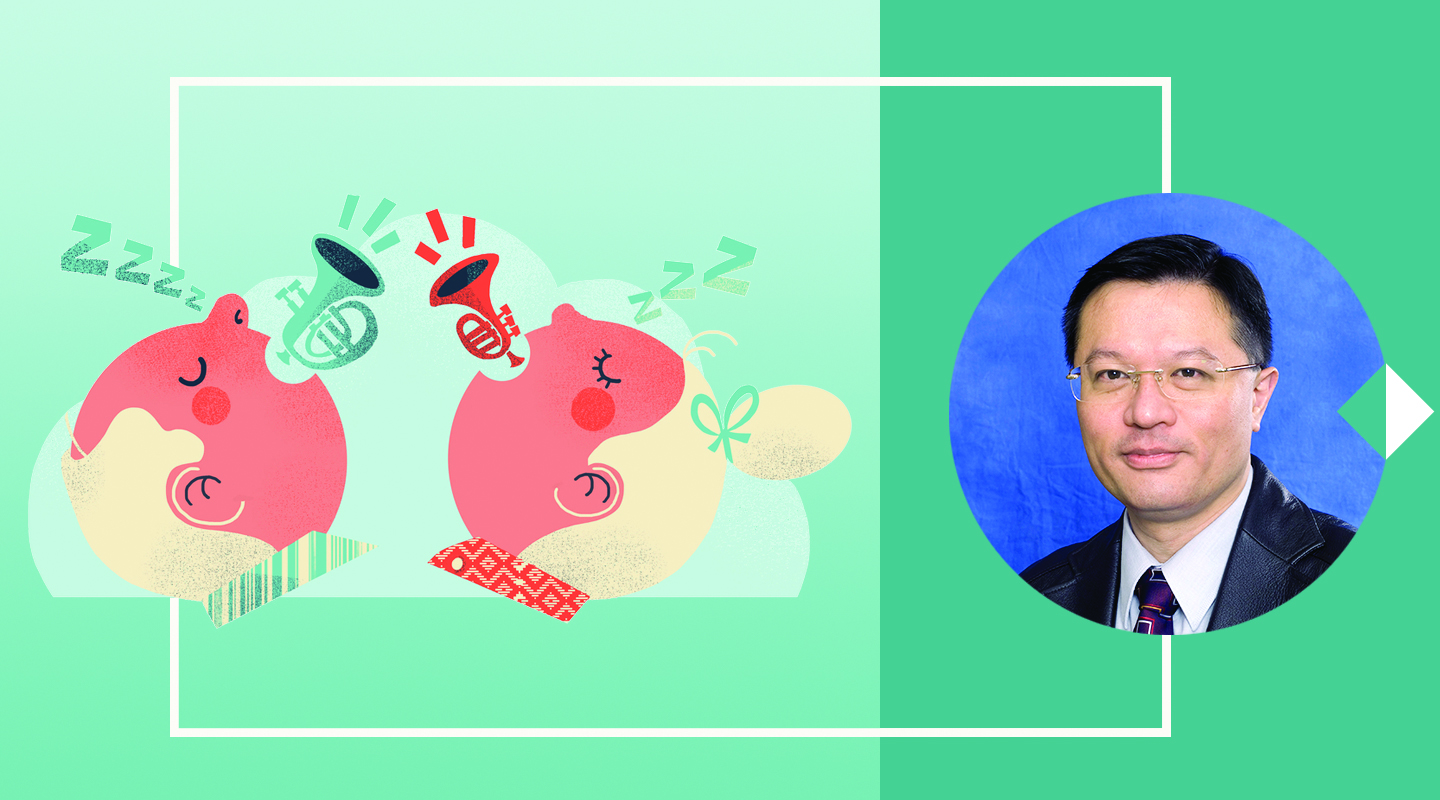Dear readers, With the launch of e-newsletter CUHK in Focus, CUHKUPDates has retired and this site will no longer be updated. To stay abreast of the University’s latest news, please go to https://focus.cuhk.edu.hk. Thank you.
A Blocked Airway Keeps Good Sleep Away

At least six out of 100 adults in Hong Kong suffer sleep apnoea. It is commonly known that loud snoring is a classic symptom of the sleep disorder. But how loud must the snoring be?
The tongue muscle of a patient with sleep apnoea is relaxed during sleep and so it sags and blocks the airway. The cessation of airflow for 10 seconds or more is defined as apnoea. Sleep apnoea is diagnosed when such cessation of airflow occurs five times or more per hour. Apnoea is severe if it occurs 30 times or more in an hour. Snoring takes place when the patient involuntarily takes a deep breath causing his uvula to vibrate. Occasional and short snoring without other symptoms such as daytime sleepiness, however, does not necessarily mean sleep apnoea.
Obesity is a major risk factor for sleep apnoea. According to a study conducted by CUHK’s Faculty of Medicine, compared with the Caucasian, Asians have a shorter lower jaw and their airway can easily be obstructed. Asians who are not obese may be susceptible to sleep apnoea as well. Even children may fall victim to it, although the cause is different. ‘Children’s immune system is not fully developed. When they are sick, their tonsil would be enlarged to produce more white blood cells to fight the infection. This may lead to the narrowing of the airway,’ said Prof. David Hui, Chairman, Department of Medicine and Therapeutics at CUHK. In contrast, it is uncommon that adults with sleep apnoea would have enlarged tonsils.
The test for sleep apnoea used to require hospital stay, but the queue for a bed in public hospitals can be very long. Besides, the attaching of sensors and gadgets to a patient’s body would affect the quality of sleep and the accuracy of the test as well. In a study conducted by the Faculty of Medicine between 2013 and 2014, home test or treatment was made possible by wearable testing and air-supplying devices. ‘We found that the home-treatment is at least as effective as the conventional hospital-treatment but the former could reduce the waiting time by about half a year,’ said Professor Hui.
As the patients of sleep apnoea gasp for air and wake up repeatedly during the night, they would feel sleepy in the daytime. Those who drive or need to operate machines would have an increased risk of accidents. Those who have loud snoring and daytime sleepiness should beware: There’s nothing like a good sleep.
M. Mak
This article was originally published in No. 536, Newsletter in Apr 2019.